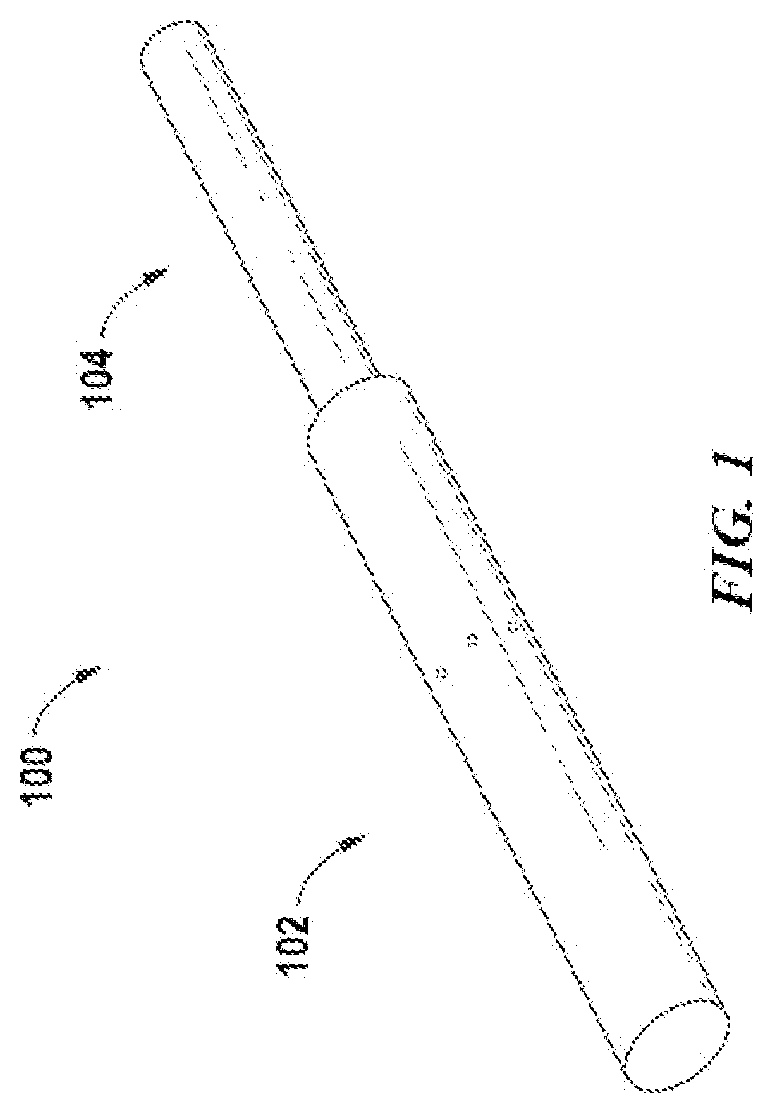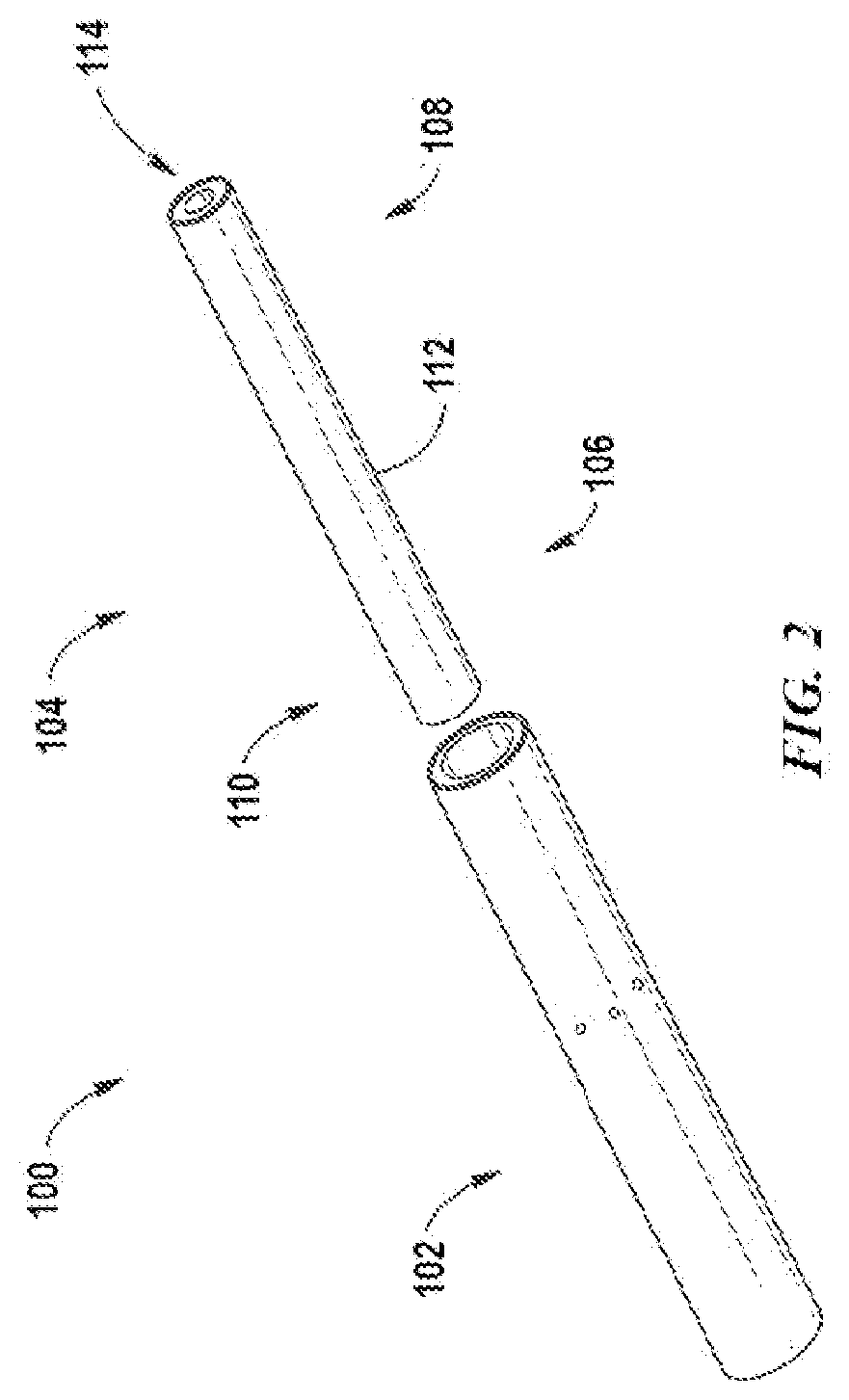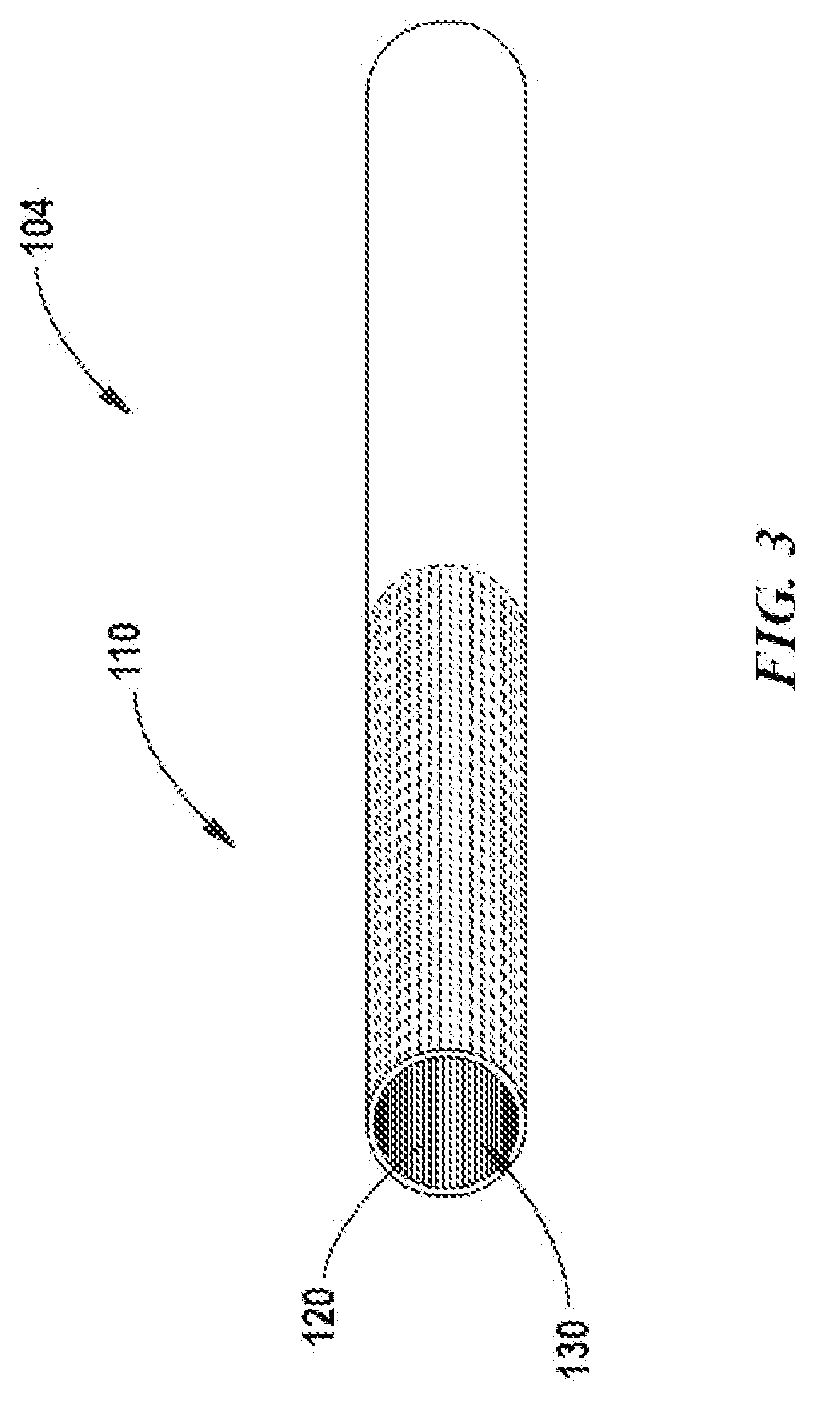Regenerated cellulose substrate for aerosol delivery device
a technology of cellulose substrate and aerosol, which is applied in the direction of tobacco treatment, cigar manufacture, tobacco-derived materials, etc., can solve the problems of inconsistent performance characteristics, inconsistent release of flavors or other inhalable materials, and insufficient loading of aerosol forming materials on substrates
- Summary
- Abstract
- Description
- Claims
- Application Information
AI Technical Summary
Benefits of technology
Problems solved by technology
Method used
Image
Examples
example 1
ntent of Pulp Materials
[0130]Samples of flax pulp and of wood pulp prepared by a conventional Kraft process (“production”), and a modified, low-sulfur bleaching process (“Mt. Holly”), were each analyzed for sulfur content by Inductively Coupled Plasma Optical Emission Spectrometric (ICP-OES) analysis.
[0131]Samples of 0.15-0.50 g of each material were accurately weighed directly into disposable polyethylene 125 mL digestion tubes. To each sample was added 10 mL of nitric acid. After about 5 minutes, ribbed polyethylene covers were placed on each digestion vessel, and the vessels were heated at 115° C. in a Hot Block apparatus for approximately 40 minutes. Vessels were removed from heat and allowed to cool. Hydrogen peroxide (5 mL of 30%) was added to each vessel, and the samples allowed to react at room temperature for approximately 5 minutes, then returned to heat in the Hot Block for approximately 30 minutes. The vessels were removed from the heat and allowed to cool. The contents ...
example 2
cess HNB Substrate (Comparative)
[0133]A comparative reconstituted tobacco heat-not burn (HNB) substrate was prepared using the paper process. Tobacco was mixed with ten times its weight of water and extracted in a counter extractor for 1 hour at 70° C. The extractor contents were subsequently separated by centrifugation into a weak extract liquor (3-6% w / v) and a non-soluble solids portion. The weak extract was then transferred into a vacuum evaporator and concentrated to 23% solids (w / v). Glycerol was added to the weak extract, and the mixture thoroughly mixed to obtain a final liquor mixture.
[0134]Pre-refined wood pulp was mixed with the non-soluble tobacco solids in a ratio of 2:1 by weight, and enough water was added to bring the final mixture to 5% solids content (w / v). The pulp mixture was refined using a disc refiner to obtain a fibrillated tobacco pulp. The pulp was conveyed to a head box and drained over a Fourdrinier wire machine to obtain a wet web (base sheet). The base ...
example 3
cess HNB Substrate (Inventive)
[0135]A reconstituted tobacco HNB substrate according to an embodiment of the disclosure was prepared similarly to Example 2, but substituting flax pulp for the wood pulp in Example 2. The final percent composition by weight of the HNB substrate is provided in Table 2.
PUM
| Property | Measurement | Unit |
|---|---|---|
| particle size | aaaaa | aaaaa |
| particle size | aaaaa | aaaaa |
| particle size | aaaaa | aaaaa |
Abstract
Description
Claims
Application Information
 Login to View More
Login to View More - R&D
- Intellectual Property
- Life Sciences
- Materials
- Tech Scout
- Unparalleled Data Quality
- Higher Quality Content
- 60% Fewer Hallucinations
Browse by: Latest US Patents, China's latest patents, Technical Efficacy Thesaurus, Application Domain, Technology Topic, Popular Technical Reports.
© 2025 PatSnap. All rights reserved.Legal|Privacy policy|Modern Slavery Act Transparency Statement|Sitemap|About US| Contact US: help@patsnap.com



